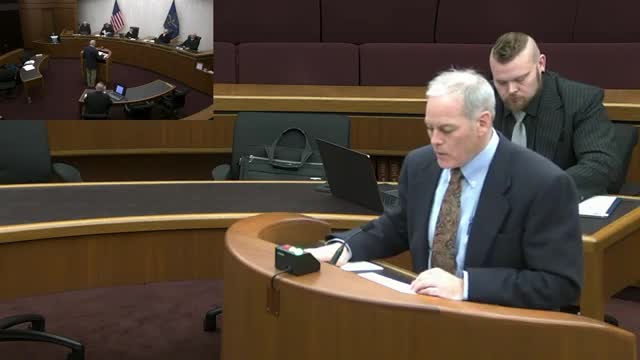Defense challenges juror bias claims in Omclov murder case
December 02, 2024 | Supreme Court , State Agencies, Organizations, Executive, North Dakota
This article was created by AI summarizing key points discussed. AI makes mistakes, so for full details and context, please refer to the video of the full meeting. Please report any errors so we can fix them. Report an error »

In a recent session of the North Dakota Supreme Court, the case of Almklov v. State sparked significant discussion regarding juror bias and the admissibility of evidence in a murder trial. The court examined claims that a juror, identified as Guthmiller, may have had a conflict of interest due to a past relationship with a manager at Progress Enterprise, the victim's employer. However, the defense argued that these claims were speculative and lacked substantial evidence to demonstrate that any bias influenced the trial's outcome.
The discussion highlighted the importance of context in evaluating potential juror bias. The court noted that simply asserting bias without concrete evidence does not suffice to challenge a juror's impartiality. The defense's argument hinged on the idea that Guthmiller's alleged bias could have swayed other jurors during deliberations, but the justices pointed out that such claims required more than mere conjecture.
Additionally, the court addressed the relevance of physical evidence in the case. The defense questioned the significance of the absence of DNA or fingerprint evidence related to the murder weapon, a brick. They argued that since the defendant, Almklov, had admitted to using the brick to strike the victim, the lack of additional forensic evidence was not material to the case.
The justices emphasized that the legal standards for proving ineffective assistance of counsel were not met in this instance. They clarified that while pro se litigants, or those representing themselves, are afforded some leniency, this does not extend to altering their claims to create a more favorable argument.
As the court deliberates on these complex issues, the implications for the community are profound. The outcome of this case could set important precedents regarding juror qualifications and the standards for evidence in criminal trials, ultimately affecting how justice is administered in North Dakota. The decision will be closely watched by legal experts and residents alike, as it may influence future cases and the public's trust in the judicial system.
The discussion highlighted the importance of context in evaluating potential juror bias. The court noted that simply asserting bias without concrete evidence does not suffice to challenge a juror's impartiality. The defense's argument hinged on the idea that Guthmiller's alleged bias could have swayed other jurors during deliberations, but the justices pointed out that such claims required more than mere conjecture.
Additionally, the court addressed the relevance of physical evidence in the case. The defense questioned the significance of the absence of DNA or fingerprint evidence related to the murder weapon, a brick. They argued that since the defendant, Almklov, had admitted to using the brick to strike the victim, the lack of additional forensic evidence was not material to the case.
The justices emphasized that the legal standards for proving ineffective assistance of counsel were not met in this instance. They clarified that while pro se litigants, or those representing themselves, are afforded some leniency, this does not extend to altering their claims to create a more favorable argument.
As the court deliberates on these complex issues, the implications for the community are profound. The outcome of this case could set important precedents regarding juror qualifications and the standards for evidence in criminal trials, ultimately affecting how justice is administered in North Dakota. The decision will be closely watched by legal experts and residents alike, as it may influence future cases and the public's trust in the judicial system.
View full meeting
This article is based on a recent meeting—watch the full video and explore the complete transcript for deeper insights into the discussion.
View full meeting
